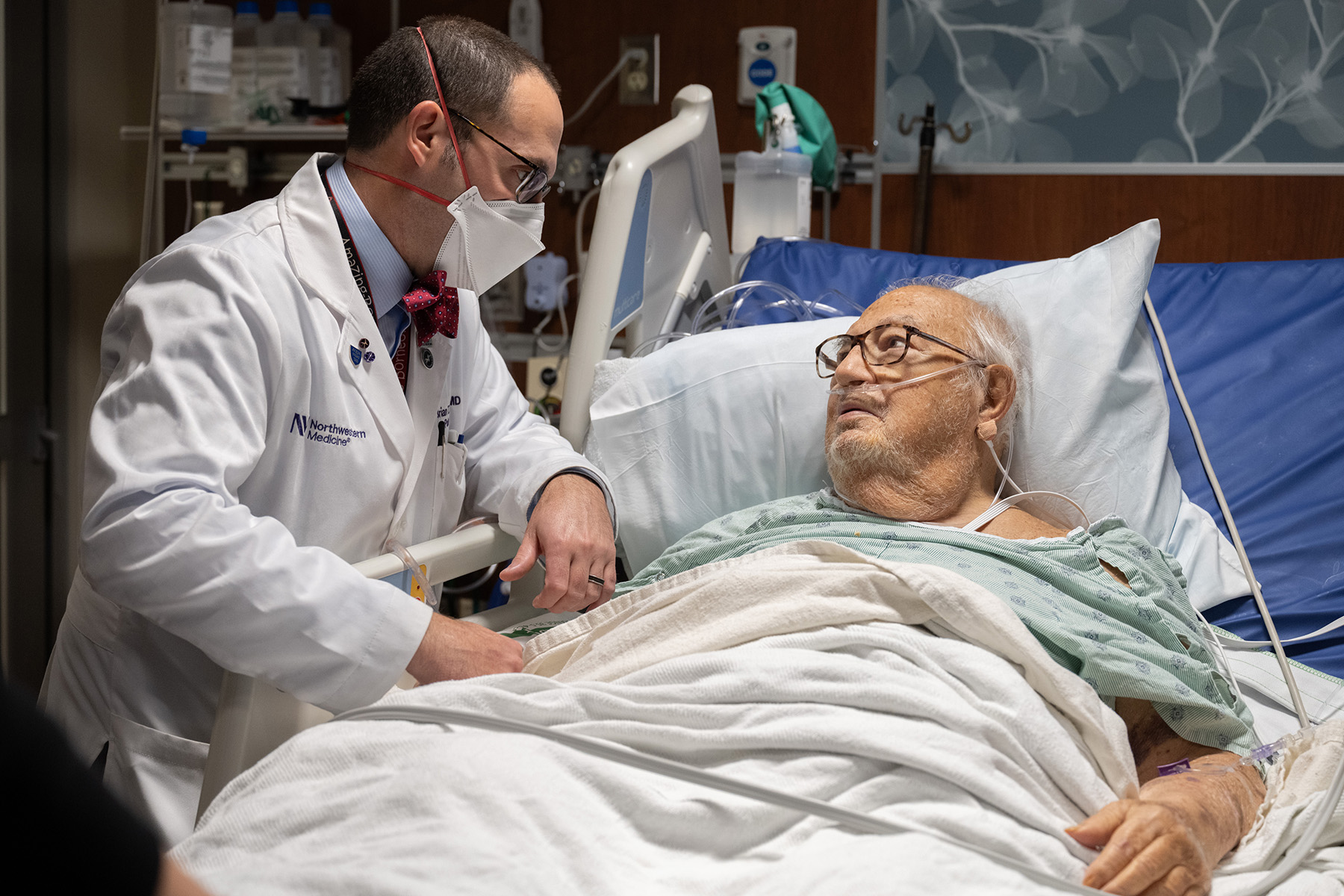
Two methods of prostate cancer biopsy – transperineal biopsy without preventive antibiotics and transrectal biopsy with targeted antibiotic prophylaxis – demonstrated similar, minimal rates of infection, according to a recent Northwestern Medicine study published in the journal European Urology.
“If you do develop an infection in the contemporary era of prostate biopsy, it’s not a serious life-threatening infection. Prostate biopsy is safe — it can be safely done without antibiotics with a transperineal approach or with directed antibiotics and offer a patient an excellent diagnostic option to detect or monitor their cancer,” said Edward Schaeffer, MD, PhD, chair and the Harold Binstein Professor of Urology and senior author of the study.
This year, approximately 300,000 news cases of prostate cancer will be detected, according to recent estimates from the American Cancer Society. Early detection is key to increasing survival and improving patient outcomes.
The transrectal biopsy approach, in which a sample of tissue is removed from the prostate using a thin needle that is inserted through the rectum and into the prostate, is the most common method for detecting prostate cancer.
However, infection can occur, and the emergence of antibiotic-resistant bacteria increases a patient’s risk of severe infection, underscoring the need for more safe and effective methods, Schaeffer said.
“This has caused us to pause and ask the question, ‘Is there a better way to do a prostate biopsy that could equally effectively sample the prostate, but with less of an infectious risk?’” Schaeffer said.
Alternatively, recent advances in a transperineal approach — which is performed with ultrasound-guided biopsy needles inserted through the skin — now allow for the procedure to be performed under local anesthesia instead of general anesthesia and without the need for antibiotics.
In the current study, the investigators aimed to compare the rates of infection in patients with prostate cancer who received transperineal biopsy without preventive antibiotics versus transrectal biopsy with targeted antibiotic prophylaxis, a technique which allows for a customized selection of antibiotics prior to biopsy and which was developed by Anthony J. Schaeffer, ‘68 MD, the Herman L. Kretschmer Professor of Urology, a co-author of the study.
A total of 658 patients across 10 academic medical centers were randomized to undergo either procedure and post-biopsy infection was measured after seven days. Secondary outcomes included cancer detection, noninfectious complications, and biopsy-related pain and discomfort both during and seven days after the biopsy.
Overall, post-biopsy infection was reported in four patients in the transrectal biopsy group and zero patients in the transperineal biopsy group. Patients who did develop an infection took oral antibiotics or had a brief hospitalization but were not admitted to the ICU and did not develop sepsis.
Additionally, the detection of clinically significant cancer was similar in both groups: 53 percent in the transperineal group and 50 percent in the transrectal group.
“First, we demonstrate that you can safely perform a percutaneous transperineal prostate biopsy safely with no antibiotics and have very limited or no infections. Second, with directed prophylaxis, we show that transrectal prostate biopsy can be done very safely without any significant infectious issues,” Schaeffer said.
As for next steps, Schaeffer said his team is currently evaluating their data to understand whether either approach offers certain advantages based on the location of the patient’s lesion, as detected by MRI. They are also investigating prostate biopsy infectious complications in individuals who have been diagnosed with cancer and are in active surveillance.
“There is some work that would suggest that there are higher rates of infections in this cohort of individuals, and so we’re studying this same question as to which approach may be safer in those individuals who have had prior prostate biopsies and are undergoing a subsequent biopsy,” Schaeffer said.
Additional co-authors of the study include Ashley Ross, MD, PhD, associate professor of Urology, Shilajit Kundu, MD, chief of Urologic Oncology in the Department of Urology, and Hiten Patel, MD, MPH, assistant professor of Urology.
Schaeffer, Ross, Kundu and Patel are members of the Robert H. Lurie Comprehensive Cancer Center of Northwestern University.
This work was funded by the National Institutes of Health grant R01 CA241758.






